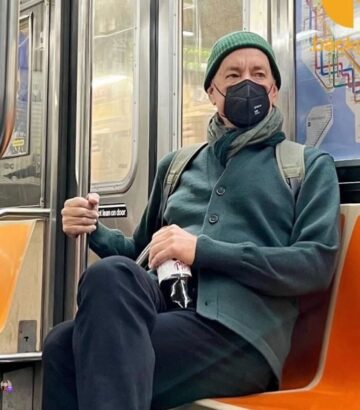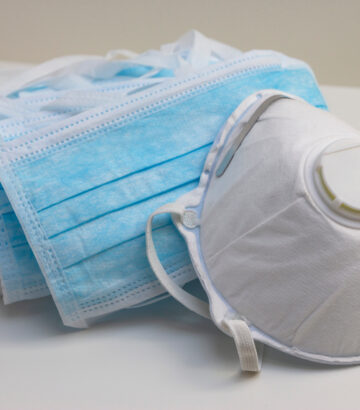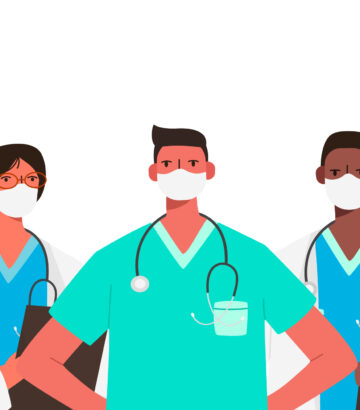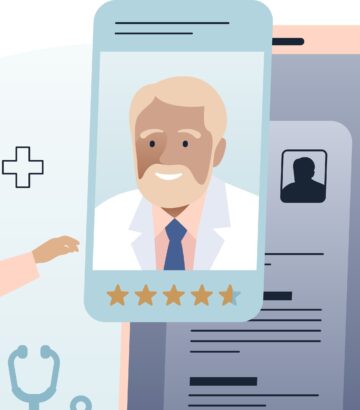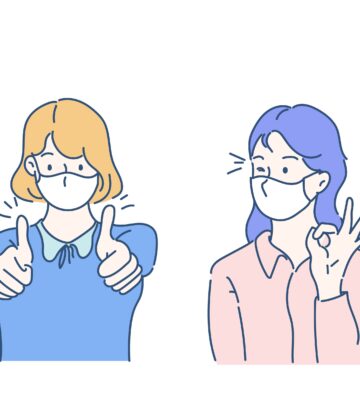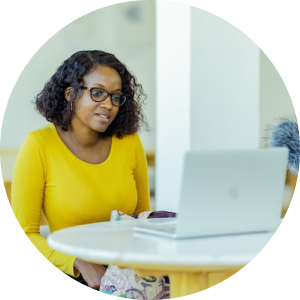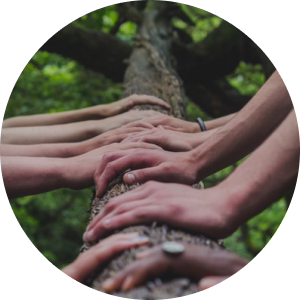Seen From Norway: “Facing Omicron, We Should Act as Soon as Possible”
French Economist Cécile Philippe interviews Norway Researcher, M.D.,Phd, BSc Econ. Gunhild Alvik Nyborg about Omicron.
December 23, 2021
CP: Norway has recently been in the news because of a Christmas party in Oslo. What can you tell us about it?
GN: This outbreak was made possible through the current Norwegian strategy. Indeed, until Omicron appeared, and since early summer, Norway was experimenting with a new strategy summarised by the overly well-known sentence “live with the virus”. You need to know that Norway was succeeding in keeping control over the virus in the first part of the pandemic. Anyway, what happened in Oslo on November 26th was the first Omicron super-spreader event known in Europe. As of December 8th, it has been confirmed that 80 people attending the Christmas party are Sars-Cov 2-positive. Among them, 17 are confirmed as being infected with the Omicron variant, and it is assumed that a majority of cases for which the sequencing results still unavailable will be found to be infected with the same variant. Sixty more people who visited the restaurant have been infected as well.
CP: What does it tell us about this new variant?
GN: It tells us many things. First, it shows the dynamics of variants that I have been warning against since the beginning of these pandemics. You want to keep the number of contaminations very low because, otherwise, new variants of concern are engineered. Second, it shows that new variants are not necessarily less harmful for society. First with Delta and now with Omicron, we discover that describing a virus as “mild” does not mean it ends up being less lethal: since it is more contagious, we get many more cases. And this aspect is what makes Omicron really worrying, because Norway may lose control of this new virus. It happens that some people attending the party went to a ski resort. It is believed that 21 Norwegian regions then got the virus from this ski resort. According to a recent report, the Norwegian Institute of Public Health estimates 90,000 to 300,000 new daily cases and 50 to 300 new hospitalizations per day over a three-week period, in a population of five million. This is along the lines of my own calculations, published on my Facebook page. If strong measures are not taken to stop the contaminations, it will not take more than four weeks for the entire population to be potentially contaminated, according to these models. The replication rate of this virus is between two and three days. We need to act quickly.
CP: Is the government taking new measures to deal with this new risk?
GN: it is, but not quickly enough. I can sense a change of attitude within the political arena since they have seen the epidemiological forecast, but there has been little decisive action up to now. Mask mandates have been imposed again when you cannot be at least one metre from other people, and booster shots are heavily recommended as is working from home. Restrictions have been imposed on the numbers of people allowed to gather and, as of yesterday, alcohol may not be served in restaurants. This will still not be enough at the present stage.
CP: How do you explain the slowness to react?
GN: There are many issues at stake. There is fatigue, of course as in many countries. There is also the very strong belief that vaccination would end the pandemic, that it would make it possible for the virus, if not to go extinct, at least to become harmless. This could have been true if vaccines had been able to stop transmission and if it had been possible to vaccinate the entire population quickly. Kids over 12 have been late to get vaccinated in Norway, and kids under 12 are not vaccinated at all. Vaccines are great tools and a crucial part of the strategy to fight this pandemic, but we have made the mistake of believing they could suffice. Vaccines are very effective when combined with non-pharmaceutical measures with the clear goal of avoiding contamination. And a final point I want to insist upon: the belief that natural immunity for kids can be a good thing is our loss. First, kids can get long Covid, but again you do not want to waste your vaccine investment on new variants.
CP: The fact remains that, from the outset, Norway has managed the crisis better than other countries. Deaths per million inhabitants remain low, and the economy did not take as big a hit as in France. How do you explain this?
GN: You are right. There is something positive we can say about Norway. Even though it is difficult to think out of the box, as consensus is sacred, the fact is the population is pragmatic. When facing facts and reality, people understand and comply. And this is happening. While at the start of the crisis, Norway was going to handle the crisis in the same was as other European countries, it decided on March 12th, 2020, that it was not possible to live with the virus, and it went into a strict lockdown for the time necessary to get rid of the virus, with border controls and quarantines maintained for a long time. Only when almost the entire eligible population had been vaccinated was it believed that these measures were not necessary anymore. We are about to learn again that they may be needed for longer periods of time along with the capacities to test, trace and isolate.
CP: Consensus is almost a matter of life and death in the Nordic countries. However, you have become a celebrity of sorts after telling people a story different from what the authorities wanted to tell at first. What happened?
GN: You could say that I have become a kind of whistle-blower, with the expected outcome that people listen closely to what I say, but many experts try to make me invisible. It happens that, at the beginning of the crisis, I was doing research at Oslo University Hospital. As resources were redirected towards the pandemic, I took the time to read everything I could about Covid-19. I would send notes and briefs to health experts, public authorities, to anyone I thought could benefit from this expertise. Then, witnessing complacency among decision-makers and health experts, I accepted an invitation to debate the situation with Fredrik Solvang, a prominent journalist known for the quality of his show on NRK (Norwegian Broadcasting Corporation, the country’s largest media organisation). This broke the news, as it was seen by 15% of the population. People believed me, and this helped empower decision-makers who shared my view that we needed to act quickly and that we should not let the virus get out of hand. Since then, I have been working incessantly to try to spread knowledge and new scientific results to the general population and to decision-makers. Recently, I have been at it again with an op-ed published by NRK. I was told it was read by around 5% of the population. The text explains that living with the virus means investing in all the measures that will put us ahead of it, not letting it roam free. I hope these contributions can add to the efforts of all those working to make a difference again.
CP: What are the lessons we should learn from Norway?
GN: Against my own personal preferences, I believe we won’t be able to avoid a new lockdown. A lesson we all need to bring home is, the sooner the better if we want to spare lives, the economy and our freedoms. Another lesson is that you need to choose your strategy carefully. People outside Norway do not realise that, for many months, Norwegians have been freer than people in most European countries because we had picked the right strategy. Norway was strong on border controls and quarantines, making life easier for the locals. You need to make sure to invest in measures that will keep you ahead of any future wave. Practically speaking, you need to see any outbreak as a fire. As soon as it is declared, put all your energy into extinguishing it. Fighting Covid is expensive. Better to prevent it than to try repairing the damage once it has completely overcome your society.
Update 1/7/2022
Since the publication of the interview, there has been a change of attitude in Norway and it managed to get cases down over the holidays.
on Dec. 15., the government issued new measures.
No lockdown was enacted, as very little has been actually closed but lots of advices on keeping distance, wearing masks etc. Some schools closed early for Christmas and some parents took their children out of school early to avoid illness during Christmas.
Most important is that the whole country seemed to take the issue seriously again and the results have been impressive. Over Christmas, Norway has actually seen cases drop, although from a high level of delta transmission to a yet high but still lower lever of mixed omicron+delta. At the moment, omicron is the dominant variant in the Oslo area but not in the country as a whole. We have managed to give almost 30% of the population a third dose now which is good.
However, 12-15 year olds have only been given a single dose, and 5-11 have unfortunately not yet been offered any vaccines as the NIPH have not yet decided to offer these the protection of the vaccines, aside those children with serious underlying conditions. So it is expected that cases will rise now when school starts tomorrow, no masking. I hope these vaccines will be allowed very shortly as they of course have been approved by EMA and the Norwegian equivalent, Norw. Medicines Agency, and are now proven safe and efficacious, and there are reports of increasing number of child admissions to hospitals due to Covid.
But the Norway example of Dec. 2021 serves to illustrate that measures do work: See the attached figure for comparison of how number of cases in Norway and Denmark have diverged after both countries saw early, large omicron super spreader events.
Link to Original Article in Institutmolinari.org
